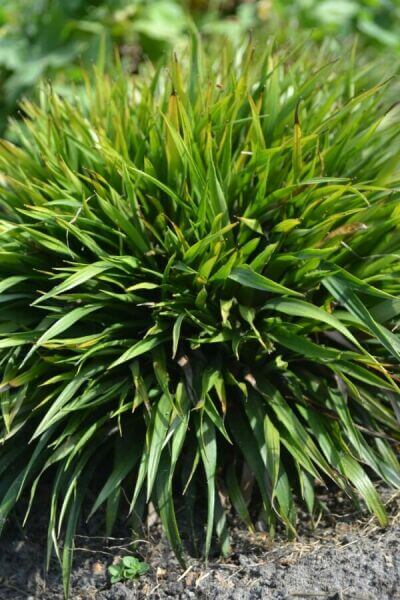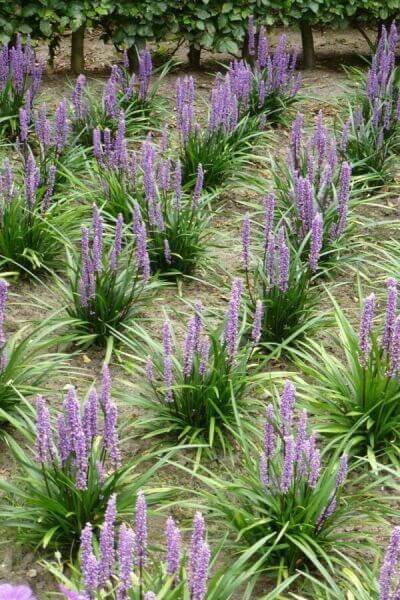Evergreen Hedge Plants For Year-round Greenery
Evergreen Hedge Plants For Year-round Greenery
Blog Article
Compact Hedge Plants For Urban Gardens
Enhance your garden's allure with lush hedge ranges such as Yew (Taxus), Thuja, Laurel, Photinia, and Bamboo, celebrated for their structural integrity and ecological advantages.
Yew and Thuja provide evergreen protection and winter season durability, while Laurel uses fast development and broad, fragrant leaves.
Photinia includes seasonal charm with its lively red foliage, and Bamboo lends a low-maintenance, peaceful atmosphere.
These hedges improve air quality, minimize sound, and create tranquil, personal areas.
Proper planting, spacing, and upkeep ensure energetic development and ecological consistency.
Check out how these lush ranges can raise your garden's beauty and well-being.
Key Takeaways
Change Your Garden With Lush Hedge Ranges
- Select Yew for its dense, evergreen growth and exceptional longevity.
- Choose Laurel for its quick development and broad leaves, making sure quick privacy.
- Select Photinia for its dynamic seasonal foliage, which turns a striking dark red.
- Use Bamboo for a low-maintenance, winter-hardy hedge with visual appeal.
- Area plants 2-3 per meter and prune regularly for optimal growth and health.
Popular Hedge Plants
When transforming a garden with rich hedge varieties, it's necessary to think about popular hedge plants such as Yew, Thuja, Laurel, and Photinia due to their special characteristics and benefits.
Yew (Taxus) is highly esteemed for its longevity and thick, green growth, making it a prime choice for withstanding landscapes.
Thuja is noted for its evergreen foliage and robust winter resilience.
Photinia adds seasonal vibrancy with red leaves that darken over time, creating dynamic visual appeal.
Laurel uses quick development and fragrant, broad leaves, ideal for quick privacy.
In Addition, Bamboo is an exceptional option for ambiance, offering a low-maintenance, winter-hardy option that boosts the garden's visual with its sophisticated, swaying walking sticks.
These selections deal with a range of horticultural needs and preferences.
Advantages of Garden Hedges
Garden hedges provide a multitude of benefits, making them a valuable addition to any landscape. These natural barriers are cost-efficient to carry out and offer significant wind security, enhancing air blood circulation and contributing to sound decrease. The dense foliage of hedges like Thuja and Beech makes sure privacy by blocking visibility, creating a tranquil and secluded environment.
Hedges likewise play a crucial function in microclimate regulation, offering a stable environment that promotes plant growth and lessens temperature changes. Their detailed leaf structures filter pollutants, enhancing air quality and adding to a healthier garden community.
Moreover, hedges excel in sound decrease, absorbing and deflecting sound waves to lower ambient noise levels. This double performance of providing both visual and acoustic personal privacy enhances the overall serenity and visual appeal of any garden.
Planting and Upkeep Tips
For an effective hedge, meticulous preparation of the planting area is important. Make sure the soil has correct pH and drainage to support strong root development.
Space the plants appropriately for the selected species. Water the hedge often during its preliminary development stage, changing as required with seasonal modifications.
Carry out a organized pest control and disease prevention strategy, using organic or chemical treatments when required. Frequently inspect for aphids, termites, and fungal infections.
Apply mulch to maintain wetness and reduce weeds. Seasonal pruning promotes dense growth and air flow, important for plant health.
Following these guidelines will help you cultivate a vibrant, well-maintained hedge that boosts the appeal of your garden.
Spacing and Cutting Guidelines
Spacing and Trimming Standards
Correct spacing and trimming are essential for cultivating healthy, visually appealing hedges. Adequate spacing makes sure each plant gets enough nutrients, light, and airflow.
Follow these standards for optimum hedge upkeep:
- Spacing: Position hedge plants 2-3 plants per meter to encourage robust growth.
- Pruning Strategies: Regular pruning is essential for keeping preferred hedge height and shape. Trim brand-new development in summer season and cut back older wood throughout winter.
- Seasonal Care: Change cutting approaches and schedules according to seasonal requirements to guarantee plant health.
- Hedge Height: Regularly screen and trim to keep the desired hedge height and attain uniform looks.
Complying with these steps will guarantee your hedge thrives, improving both the appeal and functionality of your garden.
Selecting the Right Hedge
Picking the Right Hedge
Selecting the suitable hedge includes examining factors such as fully grown height, foliage density, and environmental durability. Additional info Effective hedge plant selection requires comprehending each types' growth characteristics and site-specific versatility.
For instance, Yew (Taxus) offers outstanding durability and thick development, while Thuja is notable for its winter durability. Furthermore, thinking about upkeep requirements is crucial; fast-growing species like Laurel or Privet demand regular trimming, whereas low-maintenance choices like Bamboo or Ivy may be more effective for those looking for very little maintenance.
Ecological aspects such as soil type, light availability, and moisture conditions should also guide the selection process. This cautious method guarantees the selected hedges will prosper, offering both functional and aesthetic benefits to the garden landscape.
Delivery and Planting Recommendations
To ensure your hedge plants flourish, they ought to be delivered by specialized carriers and planted without delay upon arrival.
Follow these necessary actions for successful planting:
- Soil Preparation: Enrich the soil with organic matter to enhance drain and nutrient content.
- Planting Depth: Create a trench two times the width and equal to the depth of the root ball.
- Watering Techniques: Water completely after planting, keeping the soil regularly moist but not filled.
- Mulching: Apply a layer of mulch to retain moisture and reduce weeds.
Client Support and Service
Given the vital role of prompt support in horticultural pursuits, our customer support group is offered 6 days a week through telephone, e-mail, and social media to use professional advice and promptly deal with any concerns. Their devotion to quick reaction times ensures client satisfaction by solving queries connected to plant health, optimal planting methods, and maintenance schedules.

Interaction Technique
-----------------
Social Media
This extensive support system, enhanced by an excellent 9.3/ 10 client rating, highlights our dedication to enhancing the gardening experience for every single customer.
Frequently Asked Concerns
How Long Does It Consider Hedge Plants to Establish?
Hedge plants normally require one to 3 years to become completely established, with the precise period varying by types and growing conditions.
Effective care during this important period is necessary for robust growth. Constant watering, alert weed control, and appropriate fertilizer application are critical in promoting strong root advancement.
For example, fast-growing types like Laurel might establish faster, while slower-growing ranges such as Yew might take longer. Persistent upkeep speeds up the establishment process, leading to healthy and dense hedges.
What Are the very best Hedge Plants for Personal Privacy?
The question of the very best hedge plants for personal privacy includes examining evergreen and deciduous options.
Evergreen hedges like Thuja, Laurel, and Cypress offer year-round protection, making sure constant personal privacy.
In contrast, deciduous hedges such as Beech offer seasonal privacy, shedding leaves in chillier months.
Secret upkeep ideas for personal privacy hedges consist of routine cutting, fertilizing in spring, and correct spacing-- normally 2 to 3 plants per meter.
Additionally, consistent watering and diligent weed removal are crucial for promoting healthy, dense development.
Can Hedge Plants Bring In Wildlife to My Garden?
Yes, hedge plants can attract wildlife to your garden by providing essential advantages like shelter, food, and nesting websites, therefore boosting regional biodiversity. Yew, holly, and laurel are exceptional for bring in birds, while ivy supports a range of insects.
However, it is necessary to note that there are some downsides, such as increased upkeep to manage pests and routine maintenance. Carefully picking and preserving hedge varieties can assist stabilize these disadvantages and benefits, eventually promoting a sustainable and vibrant environment in your garden.
Are There Any Blooming Hedge Plants Available?
Yes, there are flowering hedge plants offered that can enhance the appeal of your garden.
For example, Elaeagnus, likewise referred to as Olive Willow, produces fragrant white flowers in the fall, including a touch of elegance.
Photinia, another popular option, showcases lively red leaves that develop into a rich green, developing a dynamic visual result throughout the seasons.
To guarantee these plants grow, it's important to practice proper pruning methods and seasonal upkeep, such as trimming brand-new growth in the summer season and cutting back in the winter.
These procedures will help preserve the health and visual appeal of your flowering hedges.
How Do I Prevent Bugs in My Hedge Plants?
To avoid pests in hedge plants, utilize natural bug control methods and preserve correct hedge care. Present advantageous pests like ladybugs, which prey on hazardous insects, to develop a well balanced ecosystem.
Routinely check your hedges for indications of infestation and quickly eliminate any afflicted parts to avoid the spread. Make sure the health of your hedges by using balanced fertilizers and providing sufficient water.
Use mulching to keep soil wetness and proper spacing to decrease plant stress and promote robust growth. These practices collectively help in lessening bug concerns and keeping a healthy hedge.
Conclusion
In essence, picking the ideal hedge varieties such as Yew, Thuja, and Laurel can transform any garden into a peaceful haven. These plants provide year-round greenery, enhance visual appeal, and deal useful benefits like noise decrease and wind defense.
Correct planting methods, accurate spacing, consistent watering, and seasonal cutting are essential for optimum growth.
Reputable delivery services and expert consumer support ensure a smooth experience from purchase to planting, making it easier than ever to elevate your outside space.
Garden hedges offer a plethora of advantages, making them a valuable addition to any landscape. These natural barriers are cost-efficient to execute and offer significant wind defense, enhancing air blood circulation and contributing to noise reduction. The thick foliage of hedges like Thuja and Beech ensures personal privacy by obstructing presence, producing a remote and peaceful environment.

Pruning Methods: Regular pruning is important for preserving desired hedge height and shape. Cut brand-new development in summertime and cut back older wood during winter season.
Report this page